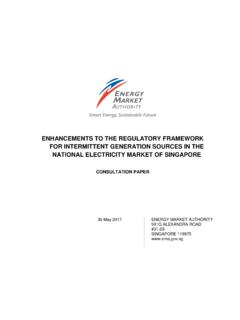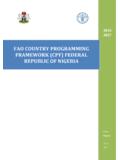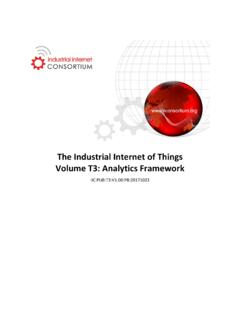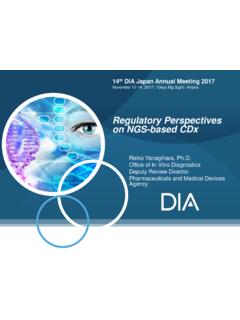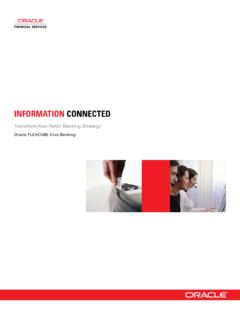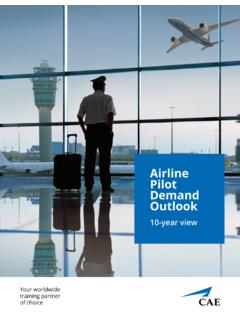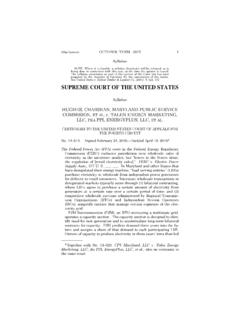Transcription of Real world evidence (RWE) - an introductions; how is it ...
1 Real world evidence (RWE) an introduction; how is it relevant for the medicines regulatory system? London, EMA, April 2018. Hans-Georg Eichler An agency of the European Union Senior Medical Officer Why do we need RWE? Case study 1: Patients with unprovoked venous thromboembolism (VTE) after 3 6 months on anticoagulants: recurrence risk of 5 10% per year. Who should/should not receive life-long anticoagulants? Derivation study to define prediction model: Prospective; 929. patients; approximately 17 years, cost ~ 12-15 million Validation study: secondary analysis of pre-existing (trials) data;. ~6 months, cost < Could a study like this be based on pre-existing e-HRs ( RWE ), only faster and cheaper? 1 Eichinger et al, Circulation 2010; Marcucci et al, J Thromb Hemost 2015. Why do we need RWE? Case study 2: Gene therapy for thalassemia holds promise for once-only administration, initial conditional approval after a few years observation in clinical trial plausible.
2 Limited information on duration of the effect, safety concern over vector-based gene therapies, insertional mutagenesis leading to oncogenesis; several years for tumours to develop, risk level is likely to be low decade-long (or life-long) surveillance of all patients unrealistic in the interventional research setting Reliable RWE (from eHRs) would be a key enabler for the development, licensing, reimbursement and safe use 2. Why do we need RWE? Case study 3: Oncology: combination therapy offers greatest potential for most patients; a plethora of potential molecules and pathways to target are available. huge combinatorial complexity : dose selection, drug combination partners, sequence of treatments, washout periods, changing tumour characteristics, patient-/tumour-related stratification biomarkers the full potential and optimal use of new agents cannot be characterised before routine use.
3 RWE is our only hope to come to grips with combinatorial complexity 3. A look over the fence - to other industries E-controls, sensors real-time analysis . keep plane safe in the air and inform next-gen product design 4. Sensors for real-time monitoring; geocoded maps; soil, weather conditions raise agricultural productivity and inform next-gen product and services design 5. Across the fence . everyday use ( practice') and R&D are not two separate activities;. future learning and rapid feed-back loops between use and R&D. are built into the system from scratch data-driven innovation'. How about healthcare? research settings everyday clinical practice ( learning') ( using'). 6. Going beyond the research-practice divide Going beyond . Population focus precision (personalised) medicine Monotherapies complex (combination) regimens Short/mid time horizons decade/life-long horizon (Randomised controlled) trials full spectrum of methods Pre-licensing knowledge generation lifespan approach Silos (insurers, regulators, developers) common approach Research-practice divide learning health care system 7.
4 E-health records: the linchpin of a learning healthcare system Are we ready? Organisation for Economic Co-operation and Development (OECD) conducts (repeat) surveys of member countries report on the: Readiness of electronic health record (eHR) systems to contribute to national health information and research [OECD. website]. Note: routinely collected data ( longitudinal record . ), not trial data, not registries, not wearables, . 8. Are we ready? 9 Source: OECD website (2017) New health technologies: Managing access, value and sustainability . Why not learn from learning airplanes, learning harvesters? Bottlenecks: Technology Data ownership, politics, .. We are different . Informed consent Patient data protection With adequate personal data protection and against undesirable use - most patients will support a learning healthcare system 10.
5 Can we accelerate the implementation of a RWE-learning/ learning healthcare system? Giving the Bandwagon a big push at the level Political/public debate Best practice Implementation Methodology development 11. Political/public debate (1). (All!) OECD Health Ministers 2017 agreed that governments establish a national health data governance framework to encourage the availability and use of personal health data to serve health-related public interest purposes while promoting the protection of privacy, personal health data and data security.. to encourage common data elements and formats; quality assurance; data interoperability standards; common policies that minimise barriers to sharing data for health system management, statistics, research and other health-related purposes that serve the public interest.. 12. Political/public debate (2). Reinforce the urgency that opportunities for patients are lost; science progresses faster than the system , impeding the development and best use of novel treatment options.
6 Myth-busting: patient-data protection and secondary data use are not a trade-off; both can be achieved at the same time. Shift the debate: Analysing personal health data is a risk to individuals Not analysing personal health data is a risk to individuals . 13. Sharing best practice (examples of building blocks'). New Zealand: public consultation in 2015 national eHR, single longitudinal view accessible to consumers, carers and decision-makers; support precision medicine, . Australia: legislation from an opt-in to an opt-out patient consent model 13 countries: offer financial incentives to encourage health care providers to adopt eHRs that conform to natl. standards EMA: ENCePP collaboration Code of Conduct to facilitate cooperation between the private pharmaceutical sector and healthcare systems 14. Implementation (examples). People Who Say It Cannot Be Done Should Not Interrupt Those Who Are Doing It.
7 Kaiser Permanente: integrated eHR system and applied Big Data analytics algorithm to predict likelihood of sepsis in new-borns, reduce unnecessary use of antibiotics;. adherence and glycaemic and blood pressure control . improve disease management FDA Sentinel initiative: share answers not data . successfully address drug safety concerns 15. Methodology? Algorithms and (statistical) methods to extract, analyse, and interpret eHR data are in place and broadly acceptable for a number of research questions. Achilles' heel: conducting relative effectiveness studies; inherent risk of bias and confounding due to the non-randomised nature of the comparison Are we making progress? Can real world data studies (based on eHRs) match the results of an RCT? (predict versus confirm!). 16. 17. Slide courtesy of S. Schneeweiss, submitted for publication Conclusions Science progresses now faster than the system , impeding the development and best use of novel treatment options.
8 Leveraging RWE is a need and an achievable goal. Accelerating the use of RWE requires a concerted effort and the necessary upfront investments. The good news: this is not a zero-sum game, all players in the pharmaceutical ecosystem stand to gain. 18. Thank you for listening! European Medicines Agency 30 Churchill Place London E14 5EU. 19.










